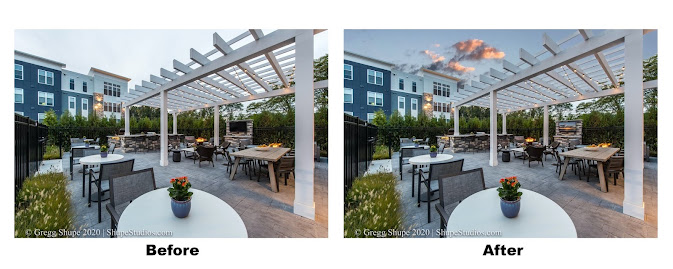When to Skip HDR and Go Single-Exposure Instead
In the world of real estate photography, HDR editing is the technique known for balancing the light for a long time, increasing the expansion and making eye -catching scenes. However, there are moments where smaller is smaller-when a risk editing offers more effective, natural or stylistically appropriate alternatives. Understanding when to leave HDR can improve the authenticity of time, budget and even the last picture.
Let's see when an exposure editing is a smarter alternative and how it fits in comprehensive techniques such as architectural editing, retotting of properties and virtual staging.
Case for HDR editing - and its limit
HDR (High Dynamic Range) editing mixes multiple exposures to create a final image with balanced shadows and highlights. This is especially useful:
Bright interiors with large windows
Mixed light status (natural + artificial)
Highlight complex texture in hotel photo editing or resort photo editing
However, HDR is not always ideal. Excessive use can lead to unnatural tones, cheering effects and time-consuming workflakes-especially for bulk entry or fast-turn projects.
When editing an exposure shines
One -exposure editing involves increasing single, well -exposed image instead of merging multiple shots. It is sharp, simple and in many cases, more than enough. Here is when it makes sense to leave HDR:
1. Well -balanced lighting
If the interior has consistently, even lighting (like many modern cabins or commercial properties), the editing of individual expons can effectively reveal the room without the complexity of HDR combination.
2. Flambient Setups
When using flambient editing (a blend of flash and ambient exposures), editors often prefer a strong base image and manually enhance details. In such cases, HDR may not be necessary, as manual blending does the job better.
3. Speed and Scale
For commercial real estate editing projects involving hundreds of rooms or units, single exposure allows for quick processing—without compromising much on quality.
4. Stylistic Minimalism
Some luxury brands or high-end commercial editing projects prefer a more editorial, clean look. Single-exposure images often offer more natural contrast and avoid the “hyper-real” aesthetic HDR sometimes creates.
Applications Across Property Types
- Architecture Editing & Retouching
In modern architectural photography, especially with controlled lighting, a single exposure can preserve the geometry and symmetry of a structure more organically.
- Hotel and Resort Retouching
For clean, minimal interior shots in hotel retouching or resort retouching, a single exposure may retain the softness and atmosphere that’s sometimes flattened in HDR.
- Virtual Staging
Virtual staging often requires a neutral lighting base. Over-processed HDR images can clash with staged elements. Editors commonly prefer single exposures here, followed by property editing and architecture retouching to match shadows, lighting, and tones.
Key Editing Techniques with Single Exposures
When you skip HDR, it becomes crucial to elevate your edits with:
Manual blending (for small adjustments within the same image)
Selective dodging and burning (to guide focus without fake-looking lighting)
Color correction and noise reduction (especially in lower-light settings)
Conclusion: Choose the Right Tool for the Right Shot
While HDR editing remains a powerful tool in property retouching and commercial architecture editing, it’s not always necessary. Knowing when to skip HDR in favor of single-exposure editing can lead to faster workflows, cleaner aesthetics, and more authentic imagery.
Whether you’re editing a minimalist office space, staging a boutique hotel room, or retouching a resort suite flooded with soft daylight, the key is choosing the technique that enhances the story of the space without overcomplicating the image.



Comments
Post a Comment